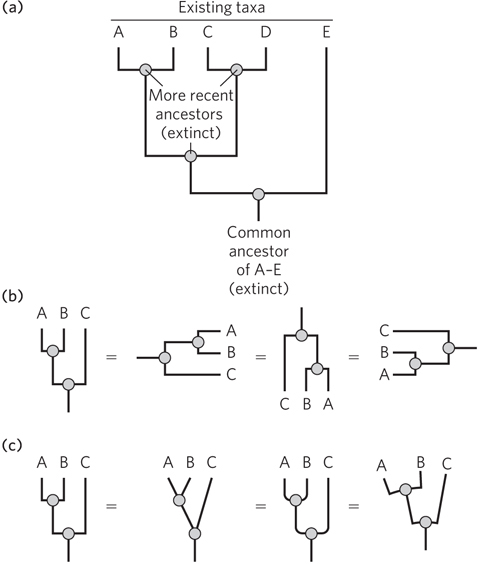
Phylogenetic trees. An evolutionary tree consists of branches (usually bifurcating) connected by nodes. (a) Basic conventions. The ends of external (upper) branches represent existing taxa, the nodes represent extinct ancestors, and the root end represents the common ancestor of the taxa included in the tree. (b) The orientation of the tree does not matter, and (c) there are several common (and equivalent) depiction styles.